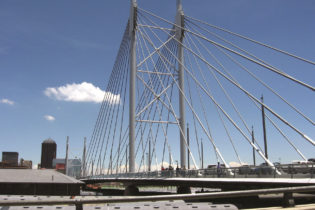By Mzukisi Kota*
Restructuring Eskom into separate functions is a sensible solution to many of its problems. We believe it can be done in a way that should be acceptable to unions but will not prejudice its lenders and the sovereign debt rating. The next step after the minister of finance’s announcement that vertically integrated Eskom will be split into its three functions – generation, transmission and distribution – will be a difficult one. It entails finding the most effective and practical route to achieve the split, in a way which is acceptable to all stakeholders, particularly the labour unions. It is clearly necessary to split Eskom up into separate business units. Despite the fears of the trade unions, this does not necessarily entail privatisation, certainly not in the short term, or that there will be inevitable job losses, as the same functions must still be performed, assuming the separation does not reveal costly inefficiencies. Depending on how it is structured, such a split need not require new legislation. A restructuring of SA’s power utility would be in line with moves by other countries, such as the UK, parts of Europe, Kenya and Uganda, which have also split their power utilities into separate entities.The ISMO Bill
In 2012 an attempt to restructure the entity was made when the Independent System and Market Operator Bill (the ISMO Bill) was introduced. It went through various modifications, but the general intention was to create an external entity that would own the transmission infrastructure and buy electricity from various generators, including Eskom, to sell to distributors. The rationale was that if Eskom was no longer both player and referee, electricity tariffs could become more transparent and competitive. A version of the ISMO Bill was recently introduced by a private member in Parliament. This version envisions some privatisation of the ISMO. It is not clear to us that the ISMO Bill can succeed in this present form.Driving transmission with policy
While it is arguably desirable to split generation from transmission, which refers to the long-distance power lines and distribution, which refers to the last mile from substations to homes, transmission is capital-intensive and return on capital is low. Remote rural areas with poor communities are unable to pay cost-reflective transmission tariffs. In SA, the situation is complicated by the fact that Eskom’s sources of power, like coal in Witbank or the Waterberg or intense solar radiation in the Northern Cape, are far from its industrial areas so lengthy transmission lines are needed. There may be policy reasons to locate generation in particular areas, so it is better that transmission be driven by policy, rather than commercial considerations.Promoting transparency
Importantly, while separating Eskom into its component parts would not in itself address its excess debt, it may be a step in the right direction as it would create more transparency. If each business unit accounts and reports separately, it would become evident which units are profitable and which are loss-making.It would also be easy to see whether private sector generators were paying the same transmission charge as Eskom generation or whether there are any suboptimal anti-competitive behaviours in the settling of transmission (on wheeling) charges.
Separate accountability is also important for the tariff-setting process in which Eskom engages with the National Energy Regulator of SA (Nersa). The tariffs set are, to a large degree, based on the projected needs of Eskom’s various operating entities. During past financial crises, Eskom has sometimes had to divert funds granted by Nersa for one purpose to another business unit to address more immediate needs. This renders the tariff setting process somewhat illusory and of little benefit.







